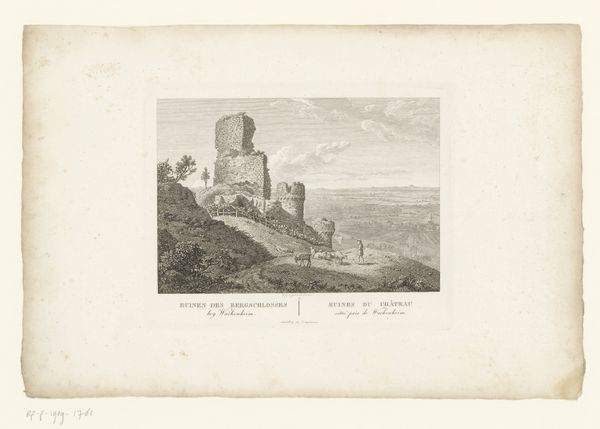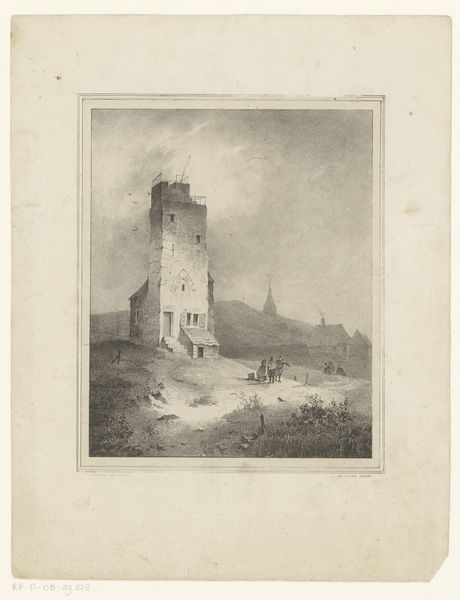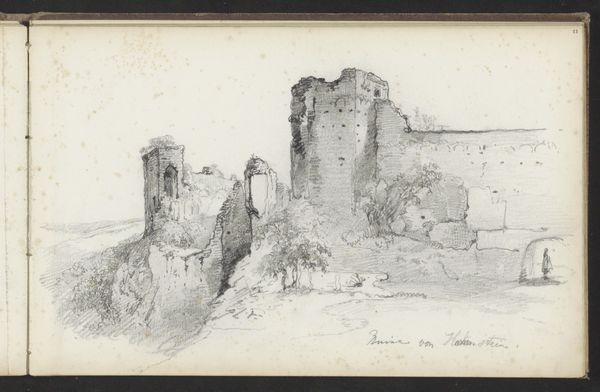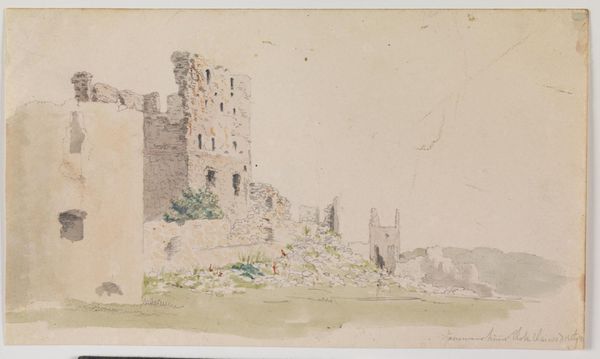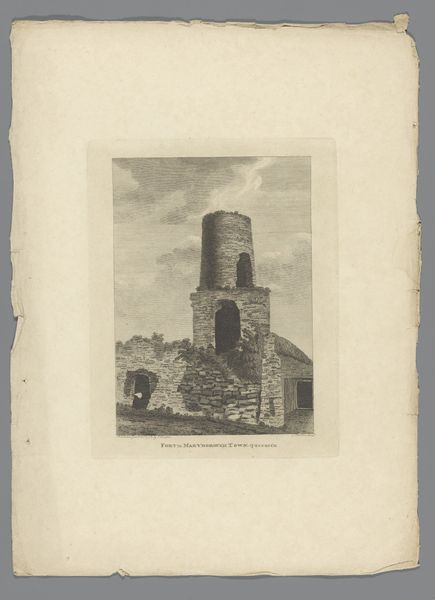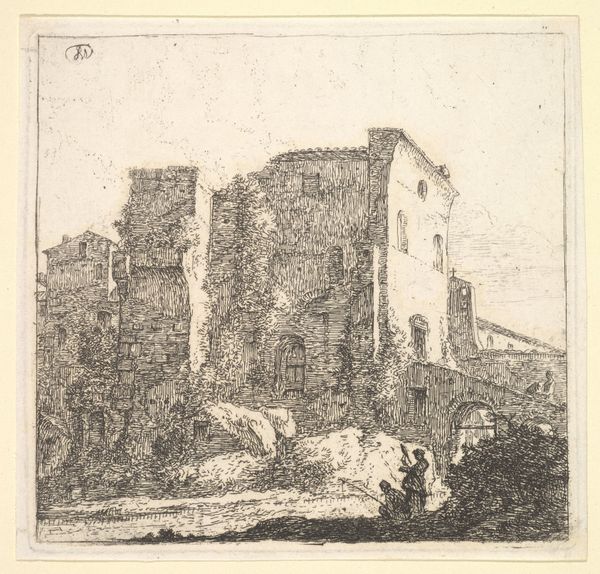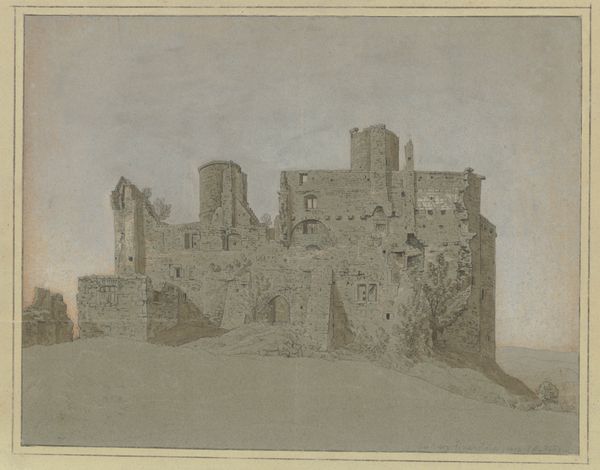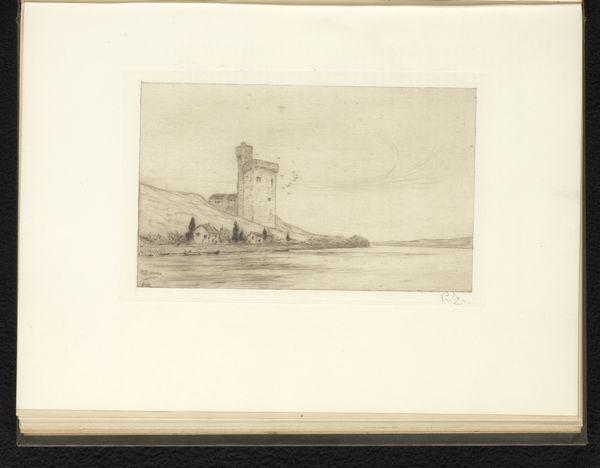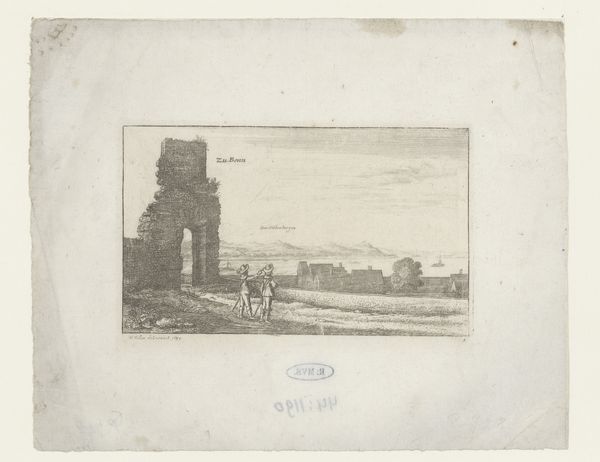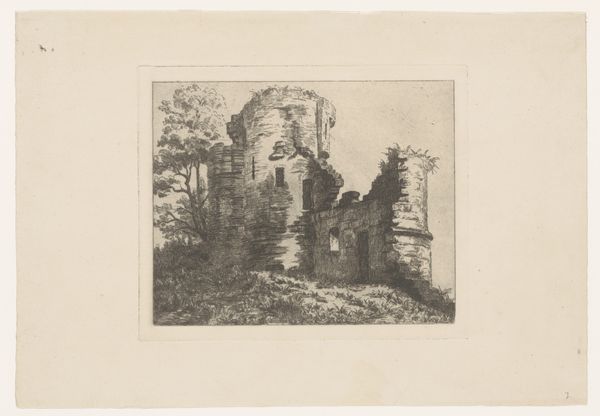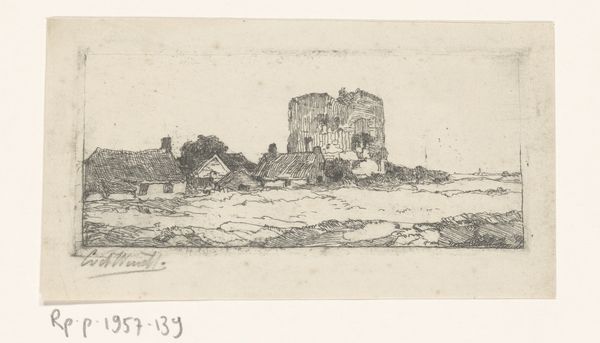
drawing, watercolor
#
drawing
#
landscape
#
watercolor
#
orientalism
#
watercolour illustration
#
watercolor
#
realism
Dimensions: height 228 mm, width 172 mm
Copyright: Rijks Museum: Open Domain
Editor: So, this is Philip Zilcken’s “Burcht in de Woestijn,” created sometime between 1890 and 1930. It's a watercolor drawing depicting, as the title suggests, a castle in a desert. I find the muted tones quite striking; it almost feels like looking at a faded photograph. What strikes you about this piece? Curator: Well, beyond its aesthetic qualities, consider this work within the context of Orientalism. It was created during a period when European artists were intensely interested in depicting the Middle East and North Africa. Zilcken, though Dutch, clearly participates in this trend. Ask yourself, how does the image reflect the power dynamics inherent in that gaze? Editor: Power dynamics? I hadn't really considered that. Curator: Think about it: Who is being represented, and for whom? Is it an accurate depiction, or is it romanticized and exoticized for a European audience? The crumbling architecture of the castle, the seemingly desolate landscape... Do these choices reinforce stereotypes or offer a more nuanced perspective? Editor: I guess the romanticized, desolate setting and even the people on camels walking towards the ruin would have appealed to westerners' ideas about the exotic and remote Orient, perhaps? It does seem to play into established narratives, instead of something realistic. Curator: Precisely. Furthermore, consider the role of institutions like the Rijksmuseum in shaping the reception of such works. By exhibiting this piece, what message is the museum sending about its own understanding of Orientalism and its legacy? Editor: This makes me rethink my initial impression entirely. What I initially saw as aesthetically pleasing, now has some cultural implications. It highlights the role institutions like the Rijksmuseum played and still play in defining and displaying history. Curator: Exactly. Art is rarely just art; it's a reflection of the socio-political forces at play during its creation and reception. I found the discussion useful. I now appreciate more, the many layers within what looks at first glance a tranquil watercolour.
Comments
No comments
Be the first to comment and join the conversation on the ultimate creative platform.
